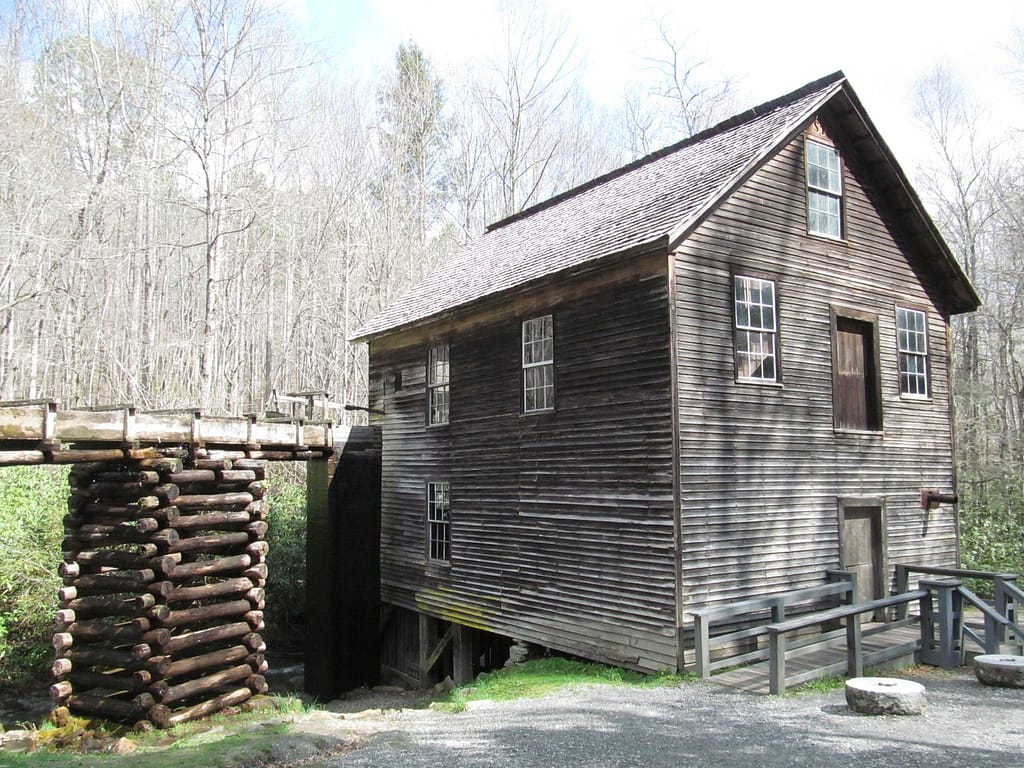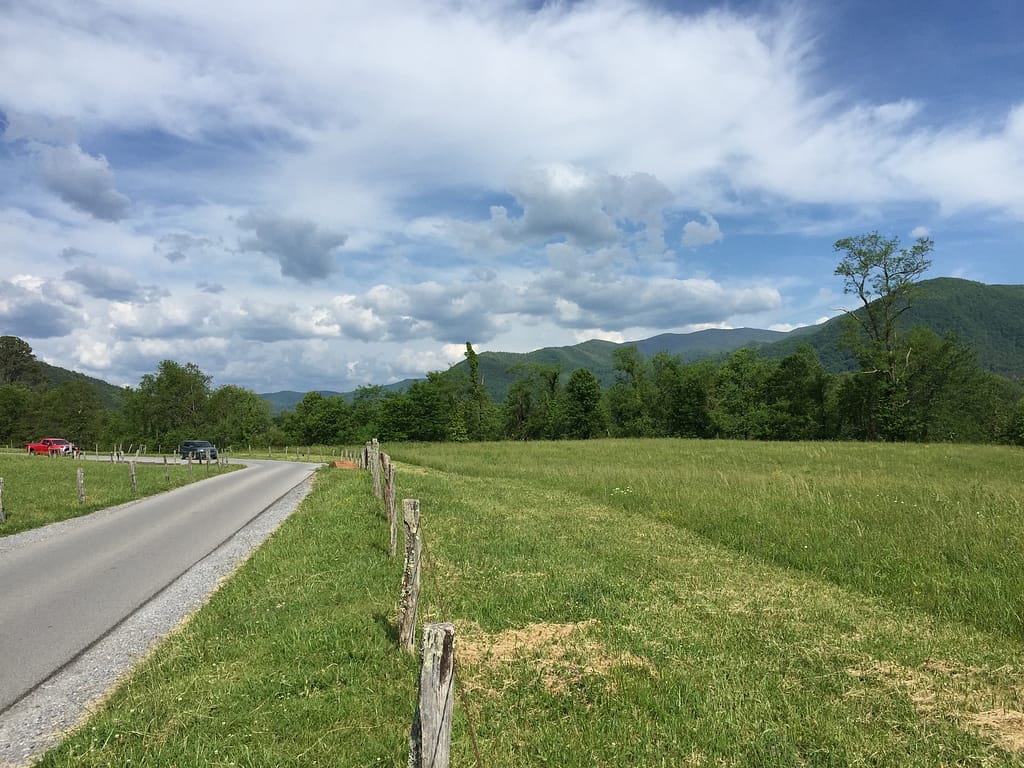
The Great Smoky Mountains are not just a natural wonder; they are a historical tapestry woven with stories, landmarks, and trails that take you back in time. While our comprehensive review of the best campsites offers a modern-day adventurer’s guide, and our seasonal guide helps you navigate the park’s ever-changing beauty, this post aims to be your time machine. Let’s explore the historical landmarks and trails that offer a glimpse into the past.
The Cherokee Heritage: A Journey Through Time and Tradition
The Great Smoky Mountains are not just a geological marvel; they are a sacred landscape that has been home to the Cherokee people for thousands of years. The trails and landmarks in the Oconaluftee area serve as living museums, offering a glimpse into the rich history and culture of the Cherokee Nation.
Trails to Explore
Oconaluftee River Trail: A Walk Through Cherokee History
Starting from the Oconaluftee Visitor Center, this easy, 1.5-mile trail is more than just a walk in the woods; it’s a journey through history. As you stroll along the river, you’ll encounter several interpretive signs that offer insights into the Cherokee way of life, their traditions, and their deep spiritual connection to the land.
What to Look For: Keep an eye out for traditional Cherokee fishing weirs in the river, ancient stone structures used for trapping fish. These weirs are a testament to the ingenious methods the Cherokee employed for sustainable living.
Accessibility: This trail is one of the two in the park where dogs and bicycles are allowed, making it a versatile option for different types of visitors.
Landmarks
Mingus Mill: A Window to the Past

Built-in 1886, Mingus Mill is not just an operational grist mill; it’s a historical landmark that offers a tangible connection to the past. The mill showcases the agricultural practices of the 19th century, which were heavily influenced by the Cherokee’s sustainable farming methods.
What to Look For: Pay attention to the mill’s ‘turbine’ rather than a ‘water wheel,’ a technological advancement of its time. The mill is still operational, and you can purchase cornmeal ground on-site, a culinary link to the past.
Pro Tips for an Enriching Visit
Seasonal Considerations
If you’re planning to visit in the spring, the Oconaluftee area becomes a vibrant canvas of blooming flora. According to our seasonal guide, spring is an excellent time for bird-watching. The resurgence of foliage and flowers also signals the return of many bird species.
Birds of Cultural Significance: Keep an eye and ear out for songbirds like the Scarlet Tanager and the Wood Thrush. These birds were significant in Cherokee folklore and were often seen as messengers or symbols of change.
Interactive Learning
Consider downloading the official Great Smoky Mountains National Park app, which offers interactive maps and historical information that can enhance your visit to these Cherokee landmarks.
By diving into the Cherokee heritage of the Great Smoky Mountains, you’re not just exploring trails and landmarks; you’re walking through chapters of a rich, enduring narrative that continues to resonate today.
The Settlers and Their Legacy: Pioneering Spirit Meets Mountain Majesty
The Great Smoky Mountains are not just a sanctuary of natural beauty; they are also a testament to the indomitable spirit of the early American settlers. These pioneers, many of Scottish and Irish descent, braved the rugged terrain to build communities that have left an indelible mark on the landscape. Their legacy is preserved in the cabins, churches, and mills that dot the Cades Cove area, offering visitors a glimpse into a bygone era.
Trails to Explore
Cades Cove Loop Road: A Drive-Through Living History

While technically not a hiking trail, the 11-mile Cades Cove Loop Road is a must-visit for anyone interested in the history of the Smoky Mountains. This scenic drive takes you through what was once a thriving community of settlers in the early 19th century.
What to Look For: As you drive, you’ll pass multiple historical structures, each with its own story. Look out for the John Oliver Cabin, Elijah Oliver Place, and the Primitive Baptist Church. Interpretive signs and optional audio guides provide context to these landmarks.
Accessibility: The loop is accessible by car, and during summer, hayrides are offered, providing a more traditional way to experience the area.
Landmarks
John Oliver Cabin: A Homestead Frozen in Time
Built in the early 1820s by John and Lucretia Oliver, the first permanent European settlers of Cades Cove, this log cabin is more than just a structure; it’s a symbol of resilience and pioneering spirit. The Olivers survived their first winter with the help of the Cherokee, and their cabin became a cornerstone of the growing community.
What to Look For: The cabin’s “dog-trot” design, a breezeway separating two log cabins under a common roof, is a notable architectural feature. It’s a testament to the ingenuity required to adapt to the Smokies’ variable climate.
Pro Tips for an Immersive Experience
Seasonal Considerations

If you’re planning a camping trip, Cades Cove Campground is an ideal location. As highlighted in our comprehensive review of the best campsites, this campground offers a unique blend of natural beauty and historical significance.
Wildlife Viewing: Cades Cove is also known for its abundant wildlife. According to our seasonal guide, summer evenings often provide the best opportunities for wildlife spotting.
Interactive Learning
To enrich your historical exploration, consider participating in one of the ranger-led programs that focus on the life and times of the early settlers. These programs often include demonstrations of traditional crafts and skills, providing a hands-on historical experience.
Exploring the legacy of the settlers in the Great Smoky Mountains offers more than just a history lesson; it provides a tangible connection to the pioneering spirit that helped shape this nation. Whether you’re driving through Cades Cove or standing in the doorway of the John Oliver Cabin, you’re experiencing a vital part of American heritage.
Pro Tip
If you’re planning to camp, consider staying at the Cades Cove Campground. Our comprehensive review lists it as one of the best campsites, especially for its historical significance.
The Era of Logging: Timber, Trains, and Transformation
The Great Smoky Mountains, while primarily celebrated for their natural beauty and cultural significance, also bear the marks of industrial ambition. The logging era, spanning the late 19th and early 20th centuries, brought about significant changes to the landscape and local communities. This period is encapsulated in trails and landmarks that serve as reminders of the complex relationship between man and nature.
Trails to Explore
Little River Railroad Trail: Tracks Through Time

The Little River Railroad Trail is not just a hiking path; it’s a historical corridor. This trail follows the route of the Little River Railroad, a pivotal player in the logging industry that once thrived in the Smokies. As you hike, you’ll encounter remnants of the old railroad, including trestles and sidings, which offer a tangible link to the past.
What to Look For: Keep an eye out for interpretive signs that detail the history of logging operations and the railroad’s role in it. These signs provide context to the trail and make for an educational hike.
Accessibility: The trail is moderately challenging, so it’s suitable for hikers with some experience. Make sure to wear sturdy hiking boots, as some sections can be rocky.
Landmarks
Elkmont Historic District: From Timber to Tourism
Elkmont began as a logging camp and later transformed into a resort community, reflecting the changing dynamics of the Smoky Mountains. Many of the buildings, including the Appalachian Clubhouse and several cottages, are now historical landmarks.
What to Look For: Take note of the architectural styles, which range from rustic log cabins to more elaborate “cottage” designs. These structures offer insights into the evolving aesthetic and functional preferences of the time.
Pro Tips for a Memorable Visit
Seasonal Considerations
If you’re visiting in the autumn, Elkmont is a prime location for leaf-peeping. As mentioned in our seasonal guide, the best time for this is from mid to late October. The changing foliage adds another layer of beauty to the historical landscape.
Photography Tips: The combination of autumnal colors and historical structures makes for excellent photography. Consider bringing a tripod for long-exposure shots, especially in the early morning or late afternoon when the light is softer.
Must-Have Items for Your Historical Exploration of the Great Smoky Mountains
Interactive Learning
To deepen your understanding of the logging era, consider visiting the nearby Sugarlands Visitor Center. They often have exhibits and documentaries that delve into the industrial history of the Smokies, providing a well-rounded perspective on this transformative period.
The era of logging in the Great Smoky Mountains serves as a compelling chapter in the park’s multifaceted history. By exploring these trails and landmarks, you not only witness the natural splendor of the Smokies but also engage with the complex narratives that have shaped this iconic landscape.
The Great Smoky Mountains are a living museum, offering trails and landmarks that allow us to step back in time. Whether it’s the rich Cherokee heritage, the rugged settlers, or the industrious loggers, each has left an indelible mark on these ancient mountains. So the next time you plan a visit, consider taking a historical detour. You’ll be walking through pages of history, with each step.